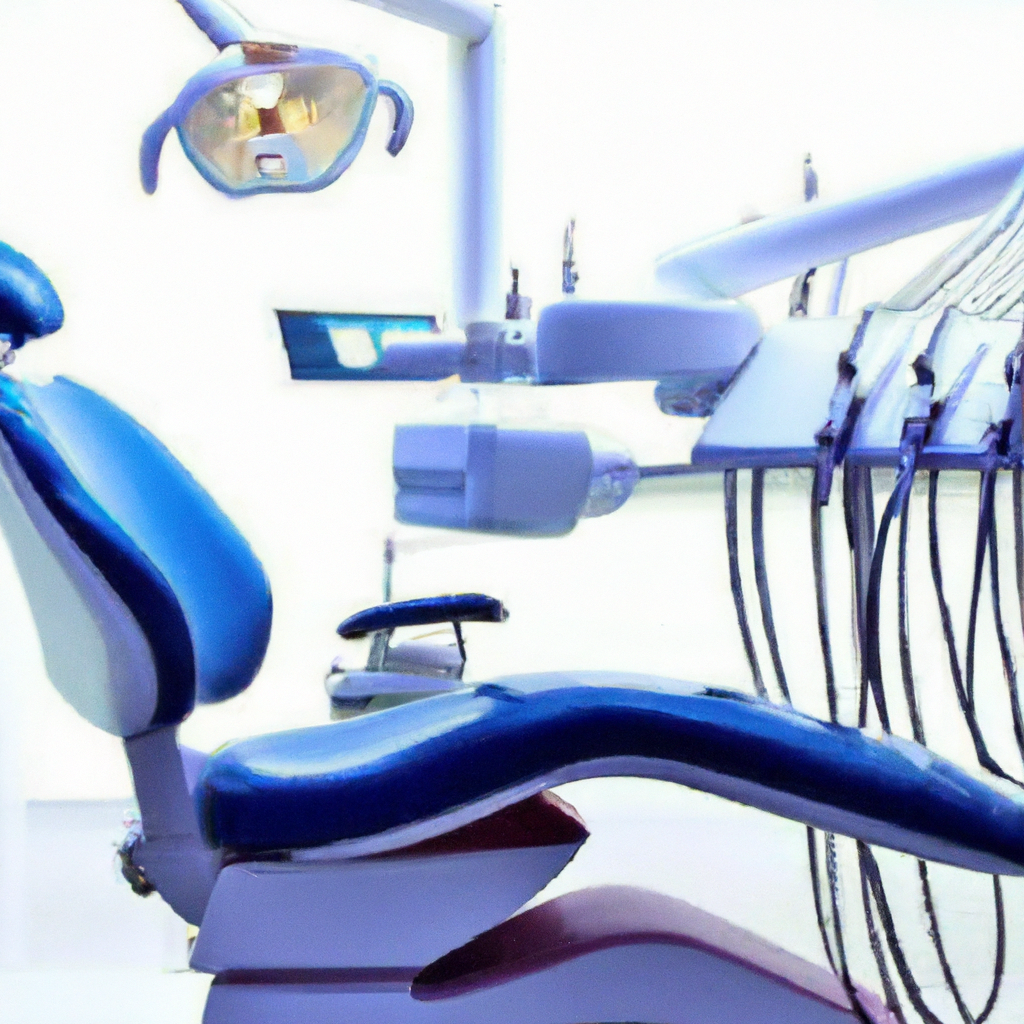Looking to enhance your dental practice’s online presence? Look no further! In our article, “Maximizing Online Exposure for Dental Practices: Local SEO Approaches,” we’ll provide you with valuable insights on how to optimize your website and gain higher visibility within your local community. Whether you’re targeting dentists or orthodontists seeking an SEO agency, we’ve got you covered. And for those in Philadelphia, you’ll be pleased to know that Ortho Advertising is conveniently located right here in your city. Get ready to take your dental practice to new heights with effective local SEO strategies!

1. Understanding Local SEO for Dental Practices
1.1 What is local SEO?
Local SEO, or local search engine optimization, is the process of optimizing a website to improve its visibility and ranking in local search results. It focuses on increasing online visibility for businesses that provide products or services in a specific geographic area, such as dental practices. By optimizing their digital presence, dental practices can attract more local customers who are actively searching for dental services in their area.
1.2 Why local SEO is important for dental practices
Local SEO is essential for dental practices because it helps them connect with potential patients in their local community. When people search for dental services in their area, search engines deliver relevant results based on their location. Therefore, without a strong local SEO strategy, dental practices may miss out on reaching potential patients who are actively looking for their services.
In addition, local SEO allows dental practices to target specific geographic areas, making it more cost-effective compared to traditional advertising methods. By focusing their efforts on optimizing their online presence in their local area, dental practices can maximize their visibility to local customers, resulting in increased website traffic, leads, and ultimately, more appointments.
1.3 Benefits of local SEO for dental practices
Implementing a strong local SEO strategy offers numerous benefits for dental practices. Here are a few key advantages:
-
Increased visibility: Local SEO helps dental practices appear in the top search results for relevant local searches. This increased visibility drives more organic traffic to their website and increases brand awareness in the local community.
-
Targeted reach: By optimizing their online presence for specific locations, dental practices can target their ideal patients in their local area. This targeted approach allows them to connect with potential patients who are more likely to convert into appointments.
-
Improved credibility and trust: When dental practices appear at the top of local search results, it creates a sense of credibility and trust with potential patients. Being easily discoverable online enhances the reputation of the practice and establishes it as a reliable and trustworthy choice for dental services.
-
Cost-effective marketing: Local SEO is a cost-effective marketing strategy for dental practices as it allows them to focus on their local market and reach potential patients who are actively searching for their services. This targeted approach ensures that marketing efforts are maximized and resources are not wasted on reaching a broad audience that may not convert into appointments.
2. Optimizing Google My Business Listing
2.1 Claiming and verifying your Google My Business listing
One of the first steps in optimizing local SEO for dental practices is to claim and verify their Google My Business (GMB) listing. GMB is a free tool provided by Google that allows businesses to manage their online presence on Google and appear in local search results.
To claim their GMB listing, dental practices should follow these steps:
- Go to the Google My Business website and click on “Start Now.”
- Sign in to the Google account associated with the dental practice.
- Search for the dental practice’s business name and address to check if a listing already exists.
- If a listing exists, claim it by following the verification process provided by Google.
- If a listing doesn’t exist, create a new one by providing accurate and up-to-date information about the dental practice.
2.2 Optimizing your business information
After claiming or creating their GMB listing, dental practices need to optimize their business information to ensure it is accurate and complete. This includes providing the practice name, address, phone number, website URL, and other relevant details.
It’s crucial to ensure that the information entered matches the details on the dental practice’s website and other online directories. Consistency in business information across different platforms improves the credibility of the practice and increases its chances of being ranked higher in local search results.
2.3 Choosing the right categories
Selecting the appropriate categories for the dental practice on the GMB listing is essential for local SEO optimization. Categories help Google understand the type of business and the services it offers, making it easier for potential patients to find the practice in relevant search results.
Dental practices should choose categories that accurately reflect the services they provide. It’s important to be specific rather than selecting broad categories. For example, instead of choosing “Healthcare Services,” it would be more beneficial to choose “Dentist” or “Orthodontist.”
2.4 Encouraging reviews and managing your reputation
Reviews play a crucial role in the success of a dental practice’s local SEO strategy. Positive reviews not only enhance the practice’s reputation but also influence search rankings. Dental practices should actively encourage their patients to leave reviews on their GMB listing.
To manage and respond to reviews effectively, dental practices should:
- Monitor reviews regularly and respond promptly to both positive and negative reviews.
- Show appreciation to patients who leave positive reviews by thanking them for their feedback.
- Address any negative reviews professionally and offer solutions to resolve any issues.
- Encourage satisfied patients to share their positive experiences on other online platforms, such as social media or dental-specific review websites.
2.5 Utilizing Google My Business posts
Google My Business posts are a powerful and often underutilized tool for dental practices to engage with potential patients. These posts appear in the knowledge panel of the practice’s GMB listing and can contain information about special offers, events, news, or any other updates.
Dental practices should regularly create and publish Google My Business posts to increase visibility and engagement. By providing valuable and relevant content, such as oral health tips or information about the practice’s services, dental practices can establish themselves as authoritative sources in their local community.

3. Local Keyword Research for Dental Practices
3.1 Importance of keyword research for local SEO
Keyword research is a critical aspect of local SEO for dental practices. It involves identifying the words and phrases people use when searching for dental services in their local area. By targeting these keywords in their digital content, dental practices can improve their chances of ranking higher in local search results and attracting relevant traffic.
3.2 Identifying relevant keywords for dental practices
To identify relevant keywords, dental practices should put themselves in the shoes of their potential patients. What terms would they use to find dental services in their area? Some potential keywords could include “dentist near me,” “orthodontist in [city name],” or “dental clinic [city name].”
Additionally, dental practices should consider the specific services they offer, such as “teeth whitening,” “dental implants,” or “braces,” and incorporate these keywords into their optimization strategy.
3.3 Utilizing keyword research tools
There are several keyword research tools available that can help dental practices identify relevant keywords for their local SEO strategy. Tools like Google Keyword Planner, SEMrush, and Moz Keyword Explorer provide insights into search volume, competition, and other important metrics.
By utilizing these tools, dental practices can uncover valuable keywords that have a good balance of search volume and competition, allowing them to optimize their content effectively.
3.4 Analyzing keyword competition and search volume
When conducting keyword research, dental practices should consider the level of competition and search volume associated with the identified keywords. Highly competitive keywords may be more challenging to rank for, especially for newer dental practices without an established online presence.
However, dental practices can target long-tail keywords or location-specific keywords to increase their chances of ranking higher in local search results with less competition. For example, instead of targeting “dentist,” a dental practice could focus on “family dentist in [city name].”
Analyzing search volume is also important to prioritize keywords. Dental practices should focus on keywords that have a significant search volume in their local area, as these are the terms that potential patients are actively searching for.
4. Creating and Optimizing Website Content
4.1 Developing unique and informative content
The content on a dental practice’s website plays a crucial role in local SEO optimization. By creating unique and informative content, dental practices can not only attract and engage potential patients but also improve their search rankings.
Dental practices should develop content that provides educational value to potential patients. This could include blog posts about oral health, treatment options, or FAQs related to dental services. The content should be well-researched, engaging, and targeted towards the needs and interests of the local community.
4.2 Incorporating local keywords in website content
To optimize website content for local SEO, dental practices should incorporate relevant local keywords strategically. These keywords should be seamlessly integrated into the content to ensure readability and natural flow while signaling to search engines the location-specific relevance of the page.
For example, a dental practice located in Philadelphia could incorporate phrases like “top dentist in Philadelphia” or “Philadelphia orthodontist.” However, it is important not to overuse keywords, as this can negatively impact the readability of the content and result in search engine penalties.
4.3 Optimizing title tags, meta descriptions, and header tags
In addition to incorporating local keywords into website content, dental practices should optimize key HTML elements to improve local SEO. This includes optimizing title tags, meta descriptions, and header tags.
Title tags should accurately describe the content of each page and include relevant local keywords. Meta descriptions should be concise summaries of the page’s content and should also include location-specific keywords. Header tags, such as H1 and H2 tags, provide structure to the content and should be optimized with relevant keywords and location information.
4.4 Implementing schema markup for local SEO
Schema markup is structured data that helps search engines understand the content on a website and display relevant information in search results. For dental practices, implementing schema markup with local SEO data can significantly enhance their visibility and relevance in local search results.
Dental practices can mark up their website with schema data such as their business address, phone number, opening hours, and patient reviews. Implementing schema markup not only improves the chances of appearing in rich snippets in search results but also provides search engines with clear information about the dental practice’s location.
4.5 Enhancing website user experience
A positive user experience is not only important for website visitors but also for local SEO. Dental practices should focus on improving the usability and accessibility of their website to provide a seamless experience for potential patients.
Some key factors to consider include:
-
Ensuring fast loading times: A slow-loading website can lead to high bounce rates and negatively impact search rankings. Dental practices should optimize their website’s loading speed to improve user experience and search engine rankings.
-
Mobile optimization: With the increasing number of users accessing the internet through mobile devices, dental practices must ensure that their website is fully responsive and mobile-friendly. This enhances user experience and improves their chances of ranking higher in mobile search results.
-
Clear navigation: Dental practices should structure their website in a logical and intuitive manner, making it easy for visitors to find the information they need. Clear navigation menus, a search bar, and organized content contribute to a positive user experience.
By enhancing website user experience, dental practices can not only increase the chances of converting website visitors into patients but also improve their search visibility in local search results.

5. Building Local Citations and Online Directories
5.1 Understanding the importance of local citations
Local citations are online references to a business’s name, address, and phone number (NAP) on various websites, directories, and online platforms. Building local citations is crucial for dental practices as they play a significant role in local search rankings.
Search engines like Google use NAP consistency across multiple online sources as a trust signal and a way to validate the authenticity and reliability of a business. The more accurate and consistent the NAP information is across different platforms, the higher the chances of the dental practice ranking higher in local search results.
5.2 Submitting to relevant online directories
To build local citations, dental practices should submit their business information to relevant online directories and platforms. These directories can range from general directories like Yelp and Yellow Pages to healthcare-specific directories like Healthgrades or Zocdoc.
When submitting to online directories, dental practices should ensure that the NAP information entered is accurate and consistent with the information on their website and GMB listing. It’s also important to select directories that are relevant to the dental industry and their local area.
5.3 Consistency in NAP information (name, address, phone number)
Consistency in NAP information is crucial to building strong local citations and improving local SEO for dental practices. Inaccurate or inconsistent NAP information can confuse search engines and potential patients, leading to lower search rankings and missed opportunities.
Dental practices must ensure that their practice name, address, and phone number are consistent across all online platforms, directories, and the GMB listing. This includes using the same format, abbreviations, and variations to maintain consistency and accuracy.
5.4 Managing and updating citations over time
Building local citations is an ongoing process, and dental practices should regularly manage and update their citations over time. This includes monitoring existing citations to ensure accuracy and consistency and updating any changes in business information promptly.
Additionally, dental practices should actively seek new citation opportunities as they arise, such as new directories or industry-specific platforms. By regularly managing and updating citations, dental practices can maintain a strong local SEO presence and maximize their online exposure.
6. Local Link Building Strategies
6.1 Importance of local links for dental practices
Link building is an essential component of SEO, and for dental practices, local link building strategies can greatly boost local search visibility. Local links refer to links from other websites or online platforms that are relevant to the dental practice’s local area.
Obtaining local links can help dental practices establish authority and relevance within their community. Search engines consider backlinks from local sources as a strong trust signal, leading to higher search rankings in local search results.
6.2 Reaching out to local businesses and organizations
One effective local link building strategy for dental practices is reaching out to local businesses, organizations, or professionals for collaborations or link opportunities. This could involve forming partnerships, sponsoring local events, or guest blogging on local community websites.
By establishing relationships and collaborations with local businesses and organizations, dental practices can increase their chances of acquiring authoritative and relevant backlinks from local sources.
6.3 Participating in community events and sponsorships
Active participation in community events and sponsorships not only benefits the local community but also provides link building opportunities for dental practices. By sponsoring a local event or getting involved in community initiatives, dental practices can gain exposure and build relationships with local media outlets or community websites.
Press releases or event coverage that link back to the dental practice’s website can significantly improve local SEO visibility and attract relevant local traffic.
6.4 Creating valuable content to attract local backlinks
Creating valuable and informative content is a powerful way for dental practices to attract local backlinks. By developing resources such as educational blog posts, infographics, or videos, dental practices can position themselves as authoritative sources within the local community.
Promoting the content through outreach efforts to local educational institutions, community organizations, or local news outlets increases the chances of earning backlinks from these authoritative sources.
By implementing local link building strategies, dental practices can strengthen their local SEO presence, enhance their credibility, and improve their search rankings in local search results.

7. Leveraging Social Media for Local SEO
7.1 Utilizing social media platforms for dental practices
Social media platforms offer dental practices valuable opportunities to engage with their local community and improve their local SEO. By utilizing platforms such as Facebook, Instagram, Twitter, and LinkedIn, dental practices can connect with potential patients and strengthen their online presence in the local area.
Social media platforms provide a platform for dental practices to share valuable content, promote their services, engage with followers, and drive traffic to their website.
7.2 Incorporating local keywords and location-based hashtags
To optimize social media profiles and posts for local SEO, dental practices should incorporate relevant local keywords and location-based hashtags. By including the dental practice’s location in profile bios and using location-specific hashtags, dental practices can increase their visibility in local searches and attract local followers.
For example, a dental practice in Philadelphia may use hashtags like #PhiladelphiaDentist, #PhillyOrthodontist, or #LocalDentalCare to target a local audience.
7.3 Engaging with local community and followers
Engagement is key to building a strong social media presence and improving local SEO for dental practices. Dental practices should actively engage with their local community and followers by responding to comments, answering questions, and sharing valuable information. This active engagement not only helps build relationships but also signals to search engines that the dental practice is active and relevant to the local community.
Posting regular updates about dental health tips, community events, or patient highlights can also foster engagement and create a sense of community around the dental practice’s social media accounts.
7.4 Promoting positive patient reviews and testimonials
Social media platforms provide an ideal space for dental practices to showcase positive patient reviews and testimonials. By sharing and promoting patient reviews on platforms like Facebook or Twitter, dental practices can leverage the power of social proof to build trust and credibility with potential patients.
Additionally, encouraging satisfied patients to leave reviews on social media platforms can help increase the number of positive reviews and strengthen the dental practice’s online reputation.
By effectively leveraging social media for local SEO, dental practices can maximize their online exposure, engage with their local community, and attract more potential patients.
8. Local SEO for Mobile Devices
8.1 Importance of mobile optimization for local SEO
With the increasing number of users accessing the internet through mobile devices, mobile optimization is crucial for local SEO success. Google’s mobile-first indexing prioritizes mobile-friendly websites in search rankings, making it essential for dental practices to ensure that their online presence is optimized for mobile devices.
Local search results often feature a map pack and are heavily influenced by the user’s location, making mobile optimization even more critical for dental practices targeting local customers.
8.2 Ensuring responsive design and mobile-friendly content
To optimize their online presence for mobile devices, dental practices should ensure that their website has a responsive design. A responsive website adapts its layout and content to fit different screen sizes, ensuring a seamless user experience across desktops, tablets, and mobile devices.
In addition to responsive design, dental practices should focus on creating mobile-friendly content. This includes using clear, legible fonts, optimizing images for fast load times, and minimizing the use of pop-ups or interstitials that may disrupt the mobile experience.
8.3 Utilizing location-based mobile ads
Location-based mobile ads are a powerful tool for dental practices to target potential patients in their local area. By utilizing platforms like Google Ads or Facebook Ads, dental practices can create targeted mobile ads that are displayed to users in specific locations.
Dental practices can set up location-based targeting parameters, such as radius targeting around their practice location, to ensure that their ads are seen by users in their local community who are actively searching for dental services.
8.4 Optimizing website loading speed for mobile devices
Website loading speed is a crucial factor for mobile optimization and improving local SEO for dental practices. Slow-loading websites not only frustrate users but also negatively impact search rankings.
Dental practices should optimize their website loading speed for mobile devices by:
- Compressing and optimizing images to reduce file sizes.
- Minimizing the use of external scripts or plugins that may impact loading times.
- Enabling browser caching to store data, reducing the need for repeated downloads.
- Utilizing content delivery networks (CDNs) to ensure fast and reliable content delivery to users.
By prioritizing mobile optimization, dental practices can enhance their local SEO efforts, provide a seamless mobile experience to potential patients, and improve their chances of appearing in local search results.

9. Monitoring, Analytics, and Reporting
9.1 Setting up Google Analytics and Google Search Console
To track the performance of their local SEO efforts, dental practices should set up Google Analytics and Google Search Console. These tools provide valuable data and insights that help dental practices measure their success and make informed decisions to improve their local SEO strategy.
Google Analytics provides data on website traffic, user behavior, and conversion rates. Google Search Console provides insights into how the dental practice’s website is performing in search results and identifies any issues or errors that may affect its visibility.
9.2 Monitoring website traffic and key metrics
Once Google Analytics is set up, dental practices should regularly monitor website traffic and key metrics to assess the effectiveness of their local SEO strategy. Important metrics to track include organic search traffic, bounce rates, average session duration, and conversion rates.
By monitoring these metrics, dental practices can identify trends, areas for improvement, and opportunities to optimize their local SEO efforts.
9.3 Analyzing local SEO performance
In addition to general website analytics, dental practices should analyze specific local SEO performance metrics. This includes monitoring local search rankings for target keywords, tracking the number of impressions and clicks for local search results, and evaluating the impact of local SEO efforts on website traffic and conversions.
By analyzing local SEO performance, dental practices can identify which strategies are most effective and make data-driven decisions to improve their online visibility and local search rankings.
9.4 Reporting to track progress and make improvements
Reporting is essential to track progress and communicate the results of local SEO efforts. Dental practices should regularly compile reports that highlight key metrics, changes in rankings, and improvements in website visibility and traffic.
These reports can serve as a valuable tool for dental practices to showcase the effectiveness of their local SEO strategy to stakeholders, identify areas for improvement, and make data-driven decisions to optimize their online presence.
10. Staying Up-to-Date with Local SEO Trends
10.1 Importance of staying informed about local SEO
Local SEO is a continuously evolving field, influenced by algorithm updates, user behaviors, and changing search trends. It is essential for dental practices to stay informed about local SEO trends to ensure that their strategies remain effective and their online presence remains competitive.
By staying up-to-date with local SEO trends, dental practices can quickly adapt their strategies, leverage new opportunities, and stay ahead of their competitors.
10.2 Following industry blogs and resources
Following industry blogs, websites, and resources is an effective way for dental practices to stay informed about local SEO trends and best practices. Blogs like Moz, Search Engine Land, and Neil Patel’s Blog regularly provide valuable insights and updates about local SEO and broader SEO strategies.
Dental practices should consider subscribing to newsletters, joining industry forums, or following relevant experts on social media to stay informed about the latest trends and developments in local SEO.
10.3 Attending SEO conferences and workshops
Attending SEO conferences and workshops is another valuable way for dental practices to stay updated with local SEO trends. These events provide opportunities to learn from industry experts, network with other professionals, and gain insights into emerging strategies and techniques.
By participating in such events, dental practices can expand their knowledge, gain new perspectives, and gather actionable insights that can be applied to their local SEO strategy.
10.4 Adapting strategies to algorithm changes and updates
Search engine algorithms are continually updated, and dental practices need to adapt their local SEO strategies accordingly. While it’s not always possible to predict algorithm changes, by staying informed about industry updates and following best practices, dental practices can minimize the impact of algorithm updates on their search visibility.
Adapting strategies to algorithm changes may involve making adjustments to on-page optimization, content strategies, mobile optimization, or link building tactics.
By staying flexible and adaptable to changes, dental practices can maintain a strong local SEO presence and continue to attract and serve their local customers effectively.
In conclusion, understanding and implementing local SEO strategies is essential for dental practices looking to maximize their online exposure and attract local customers. By optimizing their Google My Business listing, conducting local keyword research, creating and optimizing website content, building local citations and links, leveraging social media, optimizing for mobile devices, and staying up-to-date with industry trends, dental practices can enhance their local SEO efforts and improve their visibility in local search results.

